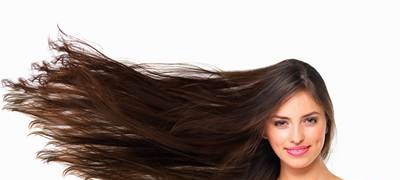|
 Hairdressers from a well-known magazine examined the most famous hair myths prevalent among women today. The conclusions were disappointing - and now there are often anti-scientific myths and prejudices about hair, its care and hygiene. In this article, we will try to dispel these misconceptions a little. Hairdressers from a well-known magazine examined the most famous hair myths prevalent among women today. The conclusions were disappointing - and now there are often anti-scientific myths and prejudices about hair, its care and hygiene. In this article, we will try to dispel these misconceptions a little.
Misconception one: Frequent haircuts strengthen hair and it grows faster.
It is not true. The hair is not grass, and the head is not a clearing. Probably, this myth is associated with facial hair in men. But facial hair and scalp hair are completely different things. The formation of these hairs occurs for completely different reasons. Hair grows on the head by about 1.5 cm per month. And no amount of haircuts will speed up their growth. The rate of hair lengthening is more influenced by the general condition of the body, nutrition, physical activity.
Misconception # 2: Split ends can be healed.
Cured - yes, but healed - no. Hair does not grow for life. Over time, older hairs fall out and are replaced with new ones. If, as a result of unsuccessful manipulations, the ends of the hair are split, then you just need to cut them a little. Damaged hair can be reanimated either with a haircut or with super glue, which, of course, is unrealistic.
Misconception three: A tight cap can cause baldness.
An oversized headgear can only accelerate the loss of diseased hair as a result of tighter adhesion to the scalp and increased friction. But the main cause of hair loss is deeper processes in the body.
Misconception # 4: Hair gets healthier when combed.
This is a rather ambiguous statement. On the one hand, by combing the hair, we prevent it from kinking when tangled. But the comb itself is a foreign object that itself disturbs the hair structure. Don't overdo it with the comb. Combing is more for beauty than health.
 The fifth misconception: A person can turn gray in a few hours. The fifth misconception: A person can turn gray in a few hours.
A similar situation can often be found in the literature. Hair color is determined at the genetic level and the loss of pigments is quite a long process. Even if, as a result of some pathology, the body ceases to secrete the necessary pigment, then the hair loses it gradually in the course of natural destruction.
Misconception six: If you pull out one gray hair, then several healthy ones will grow.
And if you twist it into a knot, then mushrooms will begin to grow on your head. This is complete nonsense, more like a joke.
The seventh misconception: The predisposition to baldness is transmitted strictly along the maternal line.
Genetically baldness occurs due to mutations in certain genes. But this mutation may not appear for several generations. And it is not known whether you will get the problem of baldness from the ancestors of your father or mother. Scientists have found that men begin to lose hair at about 18 - 20 years old, and women much later - at 45 - 55 years old.
Misconception # 8: Dandruff is dependent on skin moisture.
Dandruff is a condition that has nothing to do with skin moisture. Even people with oily hair can have dandruff problems. There are completely different medicines used to treat dandruff and to correct scalp moisture.
Misconception # 9: You can get dandruff.
If you use someone else's comb, you can get infected with much more serious skin diseases. Dandruff is caused by microorganisms that the body of each individual person is not able to combat due to internal health problems. Even if someone else's dandruff gets on your head, your body will almost certainly cope with it.
Misconception ten: If you cut your hair during the new moon period, then it will be healthier, longer and more beautiful.
This is just a beautiful fairy tale. The moon affects the body of women in a slightly different way, but not on the hair.
A.A. Box
|